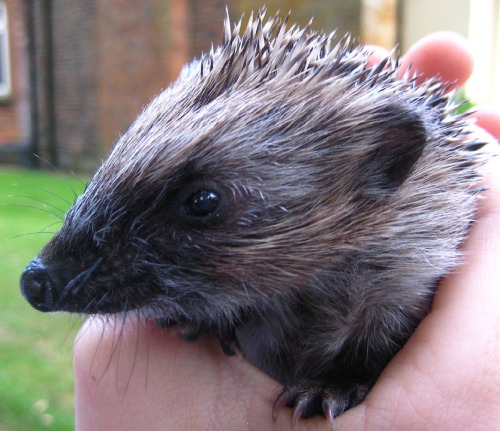Back in June last year, I wrote an article about hedgehogs because we found one in the lane. I talked about their habitat, breeding cycle, what they like to read, how they starch their little pocket hankins without tearing them on their prickles etc etc and how to encourage them into the garden.
But now that autumn is approaching, we might want to give some thought to how to care for them during the winter. Although hedgehogs don’t usually go into hibernation until the end of October or the beginning of November, hoglets that have been born later in the year, called autumn juveniles, may not have grown sufficiently to allow them to hibernate and will need extra care and it is at this time of the year that we need to keep our eyes open for these smaller animals..
Autumn Juveniles:
Autumn juveniles need to weigh at least 1lb / 450g to have enough weight to see them through the winter. If you find one wandering around after about the end of September, it might be a good idea to put some food and water out to give it a fighting chance. You can buy special hedgehog biscuits and a canned food called ‘Spike’s Dinner’ if you’re really dedicated, but there are some menu ideas below.
Baby Hedgehogs or Hoglets:
If a hoglet is under 6oz / 160g it will need food and warmth during the winter or it will die. It will need to be placed in a box with lots of clean straw, old towels or scrunched up newspapers. If it’s really cold, a little hot water bottle could be placed in the box as well. Make sure you don’t put the little bods on a concrete or mesh floor as their feet are very sensitive and they will get chilled.
Feeding:
Hoglets will need to be fed. An appropriate diet would consist of meat pet food, without gravy, chopped cooked chicken without bones, minced beef or lamb or even a bit of bran or unsweetened muesli cereal with a bit of water to moisten it. They also like banana, raisins, unsweetened crushed digestive biscuits and dry cat or hedgehog biscuits. They will need a drink of fresh water but cows’ milk must not be given as it gives them diarrhoea. If in doubt, contact your vet or the British Hedgehog Preservation Society.
Hibernation:
Adult hedgehogs start to hibernate around the end of October or November and their hibernacula are similar to their nesting sites but thicker and more protected. These nests are often sited under tree roots or piles of brushwood, old rabbit burrows, piles of garden waste or under sheds and outbuildings. These nests can be up to 20” / 50cm thick. They do occasionally wake up during hibernation but rarely leave their nests.
The main problem with their nesting sites is that often choose places that humans have earmarked for bonfires. As November 5th approaches, take great care to check heaps of garden rubbish and if you’re preparing a bonfire in advance, check it before the night and, ideally, move it on the day of the bonfire.
They usually start to emerge from hibernation around the middle of March to early April but this will depend on the weather.
Hedgehogs are the gardener’s friends and should be encouraged. If you go onto the BHPS website they may be able to advise you on how to obtain a hedgehog for your garden and there is useful information on how to care for hedgehogs and how to build a simple nesting box to keep them safe and warm.
By the way though, they don’t really read or wear aprons… they’re fantastic at croquet though.















